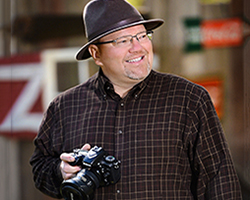Student Success: Geoff Maxwell

Years ago, Geoff Maxwell found himself taking brief, two the three hour long instructional courses at his local camera shop. But he wondered- if he dedicated more time to a traditional, comprehensive photography education, what would he be capable of? Now a graduate of NYIP, Maxwell boasts a captivated Instagram audience of nearly 50,000, sharing incredible nature and landscape shots with his fans. We had the chance to chat with Maxwell about the work he’s doing now, his advice for our current students, and his plans for the future. Here’s what we learned:
- When did you realize that photography was the field you wanted to pursue?
Shortly before joining NYIP, I was taking 2 and 3-hour courses through the local camera shop on the fundamentals of photography. I always had an interest in photography, but as technology developed and some real magical images were being created by others, I became curious if I could do the same thing myself so I decided to look into some higher learning.
- When did you enroll at NYIP?
I believe I joined in 2014. After completing those smaller courses, I was hooked. I had just enough knowledge to go out and play with settings, and fairly consistently get the exposure I wanted on a shot. But there wasn’t any magic and I wanted to learn more.
Over time, I had developed a working relationship with one of the gentlemen in my camera shop and while he spoke to another customer, I overheard them talk about NYIP. It was at this point that I came home and looked it up and liked that it sounded like it would challenge me to improve.
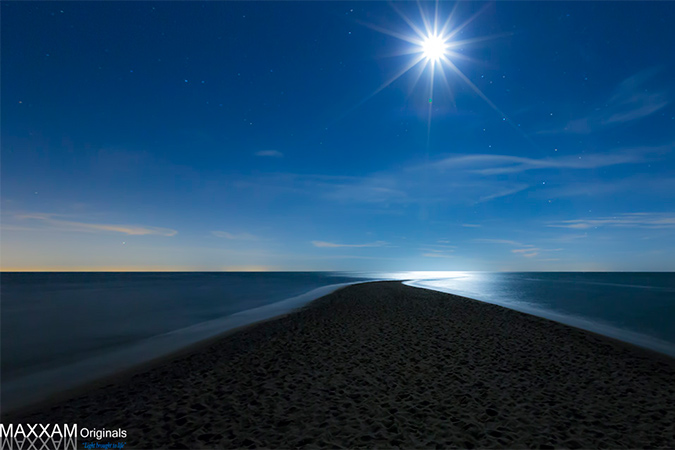
- What was your coursework like?
I elected to have printed material delivered to me. While I am Gen-X and grew up in front of a computer, I cannot use that for reading study material. It just doesn’t work for me. With that, I received several boxes promptly in the mail with a New York City return label and each time I did, I grew more excited. There was a LOT of reading. I will admit, at the time it felt like some of the text was a bit dated, but now - with more experienced eyes, the reality is that facts are facts and they don’t change with time. f2.8 is still f2.8 and the math remains the same between settings so the date it is printed is irrelevant.
When it came to projects, I look back at my submissions from time to time and am not impressed at the quality of my work. I hadn’t yet developed a creative eye, or a good sense of effective composition. Today I find them cringe-worthy, but I suppose that’s the point of looking back. I currently follow the NYIP Student Forum and am often very impressed with the work students post when looking for help – many are far ahead of where I was and can only imagine what they will produce after they graduate.
- Was your mentor helpful during the process?
My mentor was Pauline St. Denis and I was very happy with her comments on my projects. She was direct and to the point and didn’t leave anything in her comments which could be misinterpreted. I appreciate that – from an instructor I have never wanted someone to say things like “I love it”. Tell me what needs to be improved so I can improve. She did that, and more and I truly appreciate it.
- What type of work are you doing now?
To this point I have focused largely on landscapes and wildlife photography. It has been a great excuse to get away and truly plan trips down to the hour. I’m sure it was in the coursework, but it didn’t sink in at the time that the best light of the day is first thing in the morning and late in the evening. Animals know that as well and are often active at those times. As well, I like to share what I have learned to new photographers with questions. There is endless information online, but nothing replaces one on one attention.
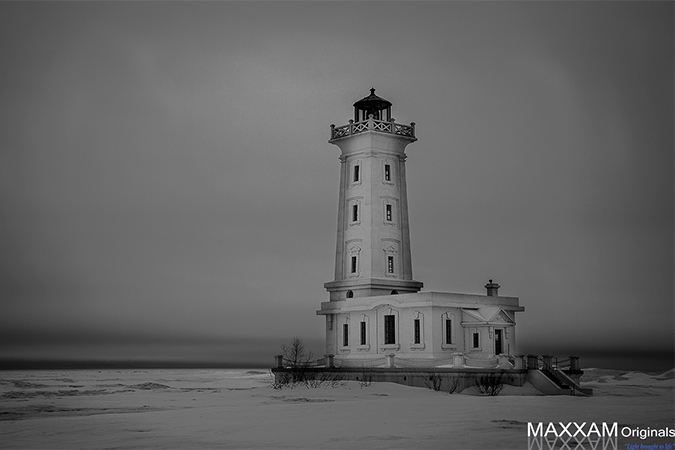
- Tell us about your photography business!
At this moment, the business of photography is my second ‘job’, and I use that loosely. I do sell my work but it is usually at art shows or someone who sees my social media account reaches out. I would love to get my work into a gallery someday but that isn’t my primary focus.
I have been working for the past few months on making my own frames in my workshop as well. Seeing a print in a plastic sleeve is one thing, but matted and framed really gives me a chance to put my work out in a way that feels complete, the way I envisioned it. This is definitely a work in progress.
I am working on a business idea that is in its infancy right now related to sports photography. While I don’t advise a photographer to work for free, I am in a good position right now to be willing to exchange photos for modelling in order to create a compelling portfolio. With my work largely being with the outdoors, I can use more experience with lighting and posing people, so this is an opportunity I am excited about.
- What have you learned as a professional that you’d like to share with our students?
I always take the word “professional” to mean anyone who sustains themselves off of their photography, which isn’t me. But if I were, my advice would be (and is) to never lose sight of the fact that if you are a business, you must conduct yourself like a business. Be aware of the laws in your area, ensure you are complying with your tax obligations and are true to yourself about how much it truly costs to be a photographer. Until you do that, you may have an exceptionally difficult time sustain yourself.
Further, while a compelling photo is what you capture with your camera, well-practiced editing skills are often essential in order to stand out among your peers. I strongly advise learning as much as you can about your favourite software to take your photos to the next level. Not only will it make your workflow faster, but the results will be much more appealing to your potential clients.
- How do you find new clients and advertise the work you do?
This is what I am working on now and so far, that answer is simple. I talk to people. Lots of people. I talk to people in fields where I may be able to take advantage of what they have to offer in some sort of partnership, and that has been leading to more people I can talk to. At this point of my infancy, my hope is to create an initial portfolio through word of mouth and then advertise in like-minded places where these people are. If I can get their endorsement of quality work, I believe I will be on a path to success.
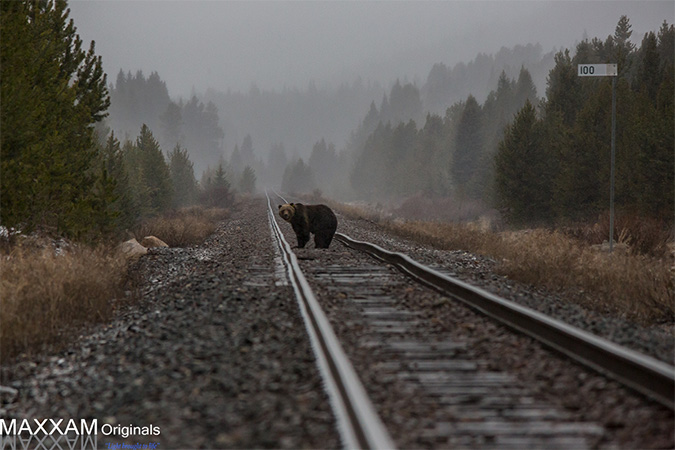
- What qualities do you think a successful, aspiring photographer needs?
I think the answer to that depends on the area of photography. I find many landscape and wildlife photographers are relatively quiet people who are happy in their own company. Is there enough money in it to support yourself? If you can stand out greatly, perhaps, but it will be hard. Portrait photographers absolutely need to be outgoing, somewhat assertive people. Their business lives and breathes on attracting clients, following schedules and directing people. A quiet, introverted person will have a difficult time of that.
Whichever direction a photographer chooses, you must have the ability to attract and sell. A little charm will go a long way.
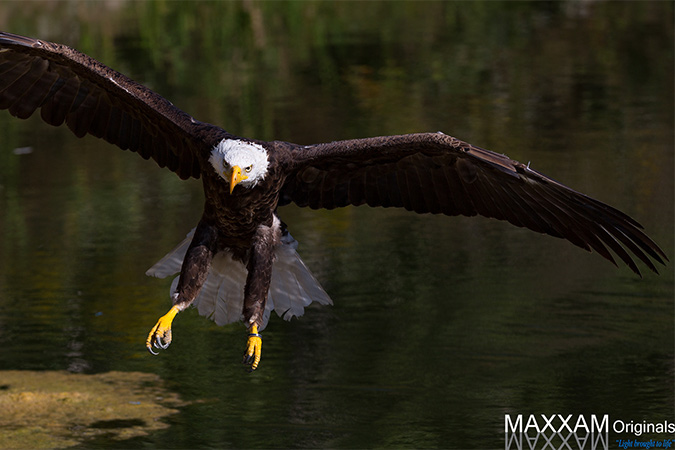
- What do you always carry with you in your camera bag?
My bag is quite simple and I’ll admit freely that the camera bag I use most is the first one that came with my original camera kit. It just works. I have two main camera bodies, one is my Canon 5D Mark III and the other is my Canon t2i. I had the second one converted to infrared in order to capture those dreamy, surreal images.
One of my favorite accessories is one that a company reached out to me to demo. Their product is called Steadify. It is a type of monopod which is attached to a belt around the waist. When extended, you rest your long lens on it and you effectively gain several stops of image stabilization. For me, an active landscape photographer and wildlife seeker, having the benefit of a built-in monopod after climbing challenging terrain to shoot an elusive animal is truly worth it’s weight in gold. I’m sorry if that sounds like a pitch, but it works therefore it can be indispensable.
As well, I typically carry extra memory cards, a cleaning kit and a remote shutter release in case I’m going to shoot the night sky.
- What’s the most interesting thing you learned at NYIP?
NYIP opened my eyes to so many things that it is difficult to choose just one. The most enjoyable challenge was to carefully analyze an advertisement and replicate it including most importantly, the lighting. Sadly, I ran out of time and wasn’t able to submit that one, but I did do it and really loved how it opened my eyes to the work that goes into a simple ad photo. Sometimes I find that I don’t see the ad anymore, I see the lighting.
- If you had to pick one, what was the most memorable photography project you’ve ever completed or shot you’ve captured?
I have two that come to mind, but I’ll share one. I was at Point Pelee National Park with my sister and her husband. One day a year, the park is open until midnight to stargazers as it is an officially designated Dark Sky Site. On this night, the moon was rising near the end of blue hour and I positioned my tripod to the tip of Canada’s southernmost point. I took several long-exposure shots, one of which, my sister walked through. When it appeared on my screen, my sister was invisible but the shot was dreamy, and to this day, it is the one that still gets the most attention.
- Describe a workday in your life as a photographer.
I will answer that in the context of a photography vacation. My night before is spent researching the sunrise and sunset of the following day, the weather, potential locations (always have a backup) and what I expect to see. If I am shooting a mountain, I need to know when the light will be its best and where to be to get it. Sometimes someone will be at that spot and if they are truly in the way, I will make my way to the backup location. From there, it is often a waiting game. Sometimes it means returning several times if a better shot would have some scattered cloud, or no cloud. I’m patient and know what I want.
When the shooting is over and the vacation is done, the next job is being brutally honest about which shot is the keeper and which are the throwaway. Hard drive space is cheap, but it isn’t without limits and RAW files are large. I flag my best, delete the low rated ones and the editing begins. I always keep some that I may edit someday down the road.
- What’s the most rewarding part of studying photography?
It’s when someone turns their head and stops to really look. Bonus points if they ask for the story on how the shot came to be. I have a few shots that often have that reaction and it brings a satisfaction like nothing else. Comments on Facebook and Instagram are nice as well. A ‘like’ is one thing, but I really enjoy it when people ask about it.
- What subject is usually your favorite to shoot?
I like to hear from people in advance and what they are interested in. I will never be a wedding photographer, but if I know that there is someone looking for a wintery scene with a beautiful male cardinal, I will do my best to find one and capture it. I’m happy to return several times until I’m proud of the shot. The same can be said for a sunrise or sunset, a lightning strike, or putting my camera on my telescope. Each request is a challenge and I have long believed that challenge is the biggest driver for people.
- If you could give one simple piece of advice to our current and prospective students, what would it be?
Be true to yourself. If you have a way of editing that you like, do it and own it. Your style will probably change over time, but if there’s one thing I know, it’s that you can point your lens at the Statue of Liberty, and it will look identical to mine unless you bring a creative vision and apply it to your work. If you don’t know what that is yes, experiment. Software today makes it very easy to explore possibilities.
My Instagram account name is @maxxam_originals. My Facebook page is also named Maxxam Originals. I’m happy to answer emails with questions when I have some spare time.

